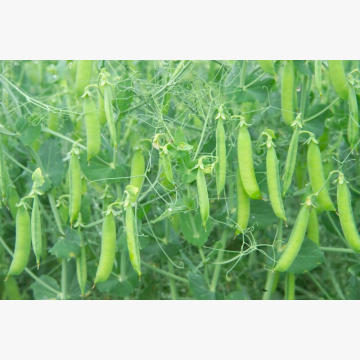- Home
- Organic seeds
- Cereals
- Field pea
- ESO (ORG) LT-EKO-001
FOR CONSULTATIONS APPLY TO:
Commercial director
Lina Smalskienė
tel. +370 618 02 551
e-mail linak@agrolitpa.lt
Sales manager
Tautvydas Kliučininkas
tel. +370 681 35 093
e-mail tautvydask@agrolitpa.lt
Sales manager
Eglė Petkevičienė
tel. +370 626 95 458
e-mail eglep@agrolitpa.lt
Sales manager
Kotryna Nakrošytė
tel.: +370 601 39 282
e-mail kotryna@agrolitpa.lt
ESO (ORG) LT-EKO-001
Pisum sativum L.
Produced in Lithuania
The mid-late pea with yellow grains, stable and high yields, very good lodging resistance, leading variety in Czech Republic and over the world
- Resistant to late spring frosts
- Medium tall plants
- Outstanding phytosanitary status – disease resistance
- Strong resistance to Ascochyta pisi
- Lower activity of TPSI (suitable also for animal feeding)
- Also suitable for silage
- Medium content of protein
- Low TKW = lower sowing rates (220-250 kg/ha) (constantly over 20 %)
- Cultivated in many countries around the world – in Denmark, Sweden, USA, Canada, Austria, Russia, Baltic states, Finland, Italy
- Early ripening
- One of the highest yielding varieties of its type in Danish trials
- Triumph in your fields – the leading variety in the Czech Republic
- Plant height – medium (100 cm)
- Grains – yellow, oval shape, uniform colour
- Highly rated by growers
- Very resistant to lodging
- Very resistant to ascochytosis
- Resistant to late frosts
- Tolerant to the drought
- Vegetation period – 113 days
- Stiff stem with very good lodging resistance (5.0 points)
- Average crop height – 51 cm, although stem length – 110 cm
- Good resistance to lodging
- Very good resistance to root diseases, fusariosis, ascochytosis
- The colour of the grain is yellow
- 1000 seeds weight – 256 g
- High protein content – 23.6 g
- Early ripening – 7.7-7.9 points (on a scale from 1 to 9)
- Flowering – after 71-73 days
- Ripening – after 105-114 days
- Stem length – 86-103 cm
- Crop height – 56-62 cm
- Resistance to lodging before harvesting – 5.7-6.1 points (on a scale from 1 to 9)
- Closely knitted tendrils help to good resistance to lodging
- Resistance to ascochytosis – very high (8.4 points out of 9)
- Resistance to grey mould – high (7.1 points out of 9)
- Resistance to root diseases – medium/high (6.2-7.3 points out of 9)
- Resistance to pea powdery mildew – medium (6.7 points out of 9)
- Weight of 1000 grains – 220-256 g
- Grain colour stability – 97-98 %
- Protein content – 22.4-23.6 % (average)
- Trypsin inhibitor (TIU) – 3.9-4.8
- Suitable for human consumption and animal feed
- Excellent protein source for both mono-gastric and ruminant animals
The varietal parameters may differ from those indicated here when the testing circumstances differ from quondam
Recommended sowing rate: 100-120 plants/m², or 200-250 kg/ha
UAB „Agrolitpa“
Keravos sreet. 17, Kerava,
LT-38 131 Panevėžys district, LITHUANIA
Enterprise's code 168598128
VAT code LT685981219
Tel. +370 615 11 315
E. mail info@agrolitpa.lt
Keravos sreet. 17, Kerava,
LT-38 131 Panevėžys district, LITHUANIA
Enterprise's code 168598128
VAT code LT685981219
Tel. +370 615 11 315
E. mail info@agrolitpa.lt




.JPG)


